Lucerne
Lucerne is probably one of the most visited cities in Switzerland. It’s only about an hour from Zurich, easily accessible by train and nestled against lake Lucerne with views of the Swiss Alps. After visiting Basel, we had just one night planned in Lucerne. It is, however, a small city and our main sightseeing objective was to go to the top of Mount Pilatus.
Mount Pilatus
Mount Pilatus is part of the Swiss Alps and reaches a height of 6,982 feet. It is not far from Lucerne which makes it a popular destination for any type of mountain related activities.
We arrived early to Lucerne and after dropping our bags at the hostel, set out for the mountain. The hostel worker assured us that it was easy to reach – simply get on the bus, get off at the correct stop and turn left. Sounded simple enough.
When we got off the bus, we had no idea where to go. There was a sign pointing to a funicular, but it was heading the opposite direction of the mountain and it didn’t feel like the correct direction. Other than that, there were no signs and the cable car wasn’t showing up on the map. Going off intuition and Google maps, I guessed the direction we had to go. We followed a rural road through a quaint village, passing a school and fields, until we finally saw a sign in the direction we were heading for. My sister, who had been less confident about our direction, finally breathed a sigh of relief as we realized we were on the right path. Every so often we’d see a bright red cable car take off toward the mountain.

Cable Car
The Cable Car was an amazing experience. There were three stations in total. At the first one, we stayed in the cable car as it passed through. At the second, we transferred to a larger cable car and at the third, we reached the summit.
The first car was no bigger than a phone booth, but smaller in height. As it slowly ascended the mountain, the town gradually receded behind us, replaced by an endless expanse of trees and forests. Hikers traversing trails passed below us and we occasionally heard the distant ringing of bells from mountain lodges nestled on the slopes. As we passed the first station, the activity below us picked up. What looked to be a summer camp with kids made their way down the trail. Signs at the station for hikes pointed in various directions.
The second station was some sort of adventure park. We had to get out of our small cable car and wait for a bigger one. Panoramic views from inside the station looked out to kids in harnesses tight rope walking, zip lining and climbing. There was even a mountain toboggan run, that is the longest summer toboggan run in Switzerland. It would have been fun to do, but we didn’t have any time. We had to wait for the next cable car.

The second cable was massive, like four elevators put together. It was also a lot faster and steeper, zooming off like the launch of a rollercoaster in an almost vertical-like direction. It was packed with people and clouds had rolled in so that car was blanketed in white. The view was nothing but clouds, except the occasional jagged, snow-covered edge of the mountain piercing through as we zipped past. As the ascent slowed, the last cable station came into view. We had made it to the top.
The top of Mount Pilatus was like a little Alpine resort. I’ve never seen such a fully developed mountaintop. The cable station had a few luxury shops, a hotel-like kiosk and some places to get food and drink. Above and in the open air were two hotels, one a circular building and the other an old-looking stone chalet. On one side, the one we came up the mountain was a steep precipice, while the other was a gradual snow-covered inclined dotted with the occasional hiker making their way to the top. It was mid-June and there was still snow at the top! Two peaks were on either side, one was closed, so we climbed up a few steps to the other. The weather fluctuated between cloudy and clearer skies, but never quite clear enough to see the valley below. It was a little windy, but the sunshine made it out and with it, it was quite enjoyable.
After about two hours at the summit, we made our way down. Instead of taking the cable car, we took the train, which is the steepest cogwheel railway in the world. It takes about 30 minutes. It was built in 1889 and follows a gradient of up to 48 percent. It was amazing and afforded us fantastic views as we descended the other side of the mountain. We descended past the snow-covered slopes of the mountain, into grassy slopes, past cows grazing, conifer tree forests and eventually to the shore of lake Lucerne, where we took a train back to the center of the city.
Fondue
Fondue, a cheesy based dish that is synonymous with Switzerland. If it wasn’t for my sister, I don’t think I would have known and probably wouldn’t have eaten it. Like tourists in Spain who eat paella at night, we were the tourists who ate fondue in the summer. Traditionally, it’s a winter dish, but sometimes when you’re traveling you have to toss tradition aside. We asked the hostel worker where the best place to have fondue and the worker said something about how the Swiss never go out to eat it, but usually make it in their home. They had a fondue set and recommended that we make it there, not only would it be cheaper, but we could also buy anything to put in it, whereas a restaurant would most likely only offer bread.
After arriving back to Lucerne from our mountain visit and a short stroll around Lucerne’s historic downtown, including a walk across the picturesque chapel bridge, we headed to the store to buy our fondue ingredients. We went with the hostel worker’s recommended cheese brand and bought a cornucopia of dipping foods; bread, strawberries, mushrooms, apples, pears, baby potatoes, meat and veggie rectangle things. When we got back to the hostel, they set up the fondue set for us. We put the cheese in and we waited, and waited, and waited. It took forty to fifty minutes for the cheese to get to the fondue consistency and the whole time we were second guessing ourselves, at one point we started eating it too early, only to ask the worker and for her to tell us it needed more time. Meanwhile, in the hostel kitchen, a couple of Swiss travelers started making their own fondue, but they melted the cheese on the stove in a pan. That’s what we were supposed to do, instead we used the little fondue burner, which was like trying to cook something with a lighter. Live and learn, I guess.

Lausanne
The next day I departed to Lausanne, while my sister booked herself a spa day atop a mountain before heading back to the U.S. I still had three and a half weeks left in my travels and Lausanne was only a little layover on my way to Lyon, France, which was a stop only so that I could make my way to La Tourette Monastery, a 20th century masterpiece by the French modernist architect Le Corbusier.
Cantonal Museum of Fine Arts
The Cantonal Museum of Fine Arts (CMFA) was the main reason I stopped in Lausanne, however while I was there, I realized I could also make it to the Rolex Learning Center by SANAA, on the EPFL campus outside of Lausanne. The CMFA was just completed in 2022 and is part of Lausanne’s new museum complex that sits right next to the train station. It couldn’t have been easier to get to. It’s a long building with a repetitive brick column-like exterior the length of the building; the entrance and windows exist within this rhythm, creating a continuous unbroken facade. Traces of the former industrial building remain like echoes of the past. It’s a monolithic structure that defines the urban space.
École Polytechnique Fèdèrale de Lausanne (EPFL)
EPFL is located on the outskirts of Lausanne, about a short 20-30min train ride from the city center. It hosts a variety of unique buildings designed by world renowned architects and firms. My main goal was to see the Rolex Learning Center by SANAA, a building my materials professor dedicated an entire class to, but there are other notable buildings as well, like EPFL Pavilions by Kengo Kumo, a world-renowned Japanese architect; the Mechanic Building by Dominique Perrault Architecture; SwissTech Convention Center by Richter Dahl Rocha & Associates; and these modular looking cube buildings from maybe the 60s or 70s that dominate the campus.
Rolex Learning Center
The Rolex Learning Center was designed by SANAA and competed in 2010. It serves as a library, social hub and study space for the students and when I was there, it was during finals week/month, so it was packed with students. I felt extremely self-conscious walking around trying to take photos of it while trying not to make it seem like I was taking photos of them. It was difficult because students were everywhere.
The most notable feature of the building is its fluid, undulating design, featuring sloped floors, open floor plans, and very minimal internal divisions, creating a seamless and expansive, flowing space. From above, it’s a giant rectangular piece of Swiss cheese, with holes punctured throughout that not only allow light into the spaces, but because of the undulating floor plan creates pockets of courtyards, covered and sunlit.
It’s a horribly inefficient use of space. Most of the floor is uninhabitable because of the slope, which makes students cluster in certain areas. For someone with a disability, navigating would have an extremely difficult, and almost impossible, for them. Even without a disability, it’s difficult to navigate. Without demarcations, it’s impossible to orient oneself. I tried to find a bathroom by following a sign downstairs only to not be able to find it once down there. Because of the open floor plan and cluster of students, the space is endlessly noisy, which is not ideal for studying.
The Rolex Learning Center clearly emphasizes aesthetics over functionality, creating a striking and unique architectural landmark for the school to showcase, but one student’s probably find less practical. As someone who loves taking photos, it was a fantastic building to take photos of, especially with a beautiful sunny day.
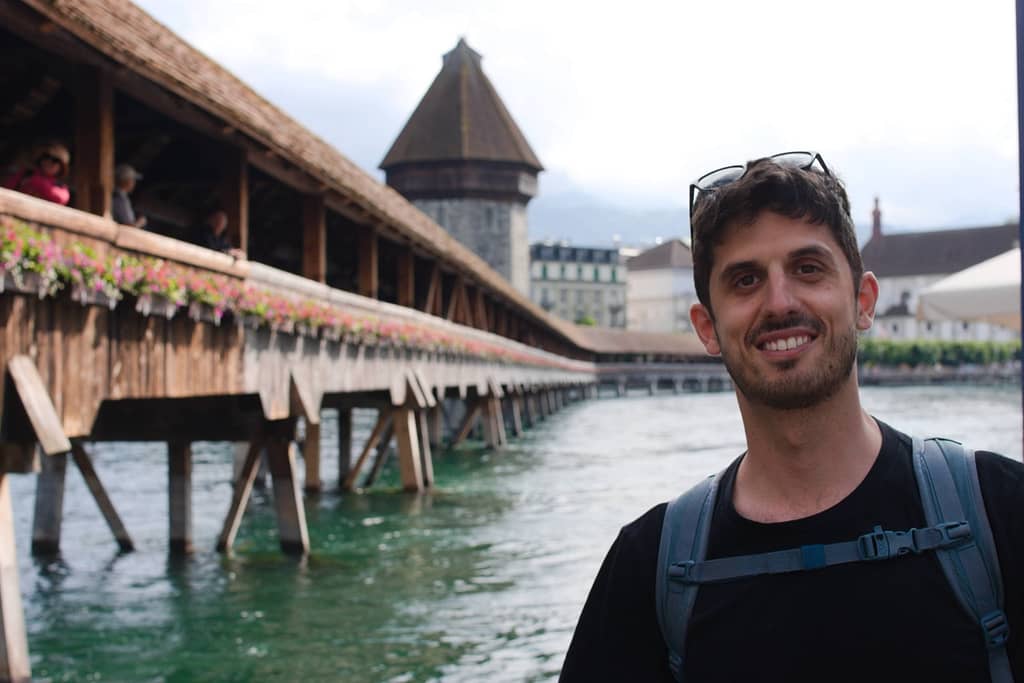



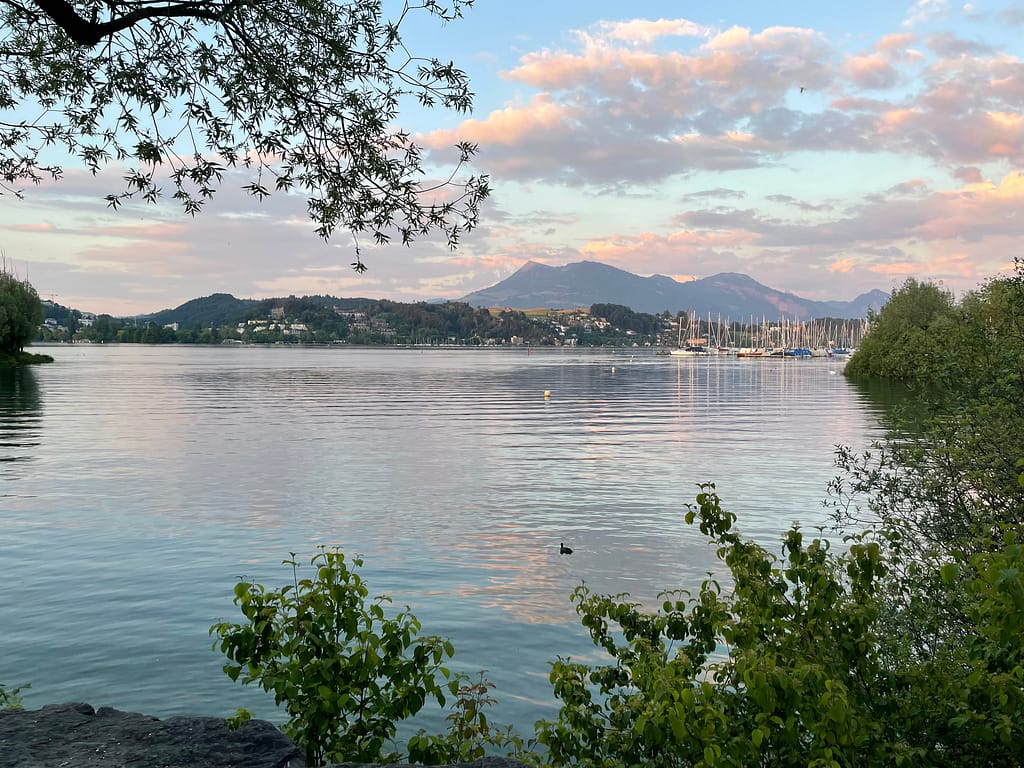


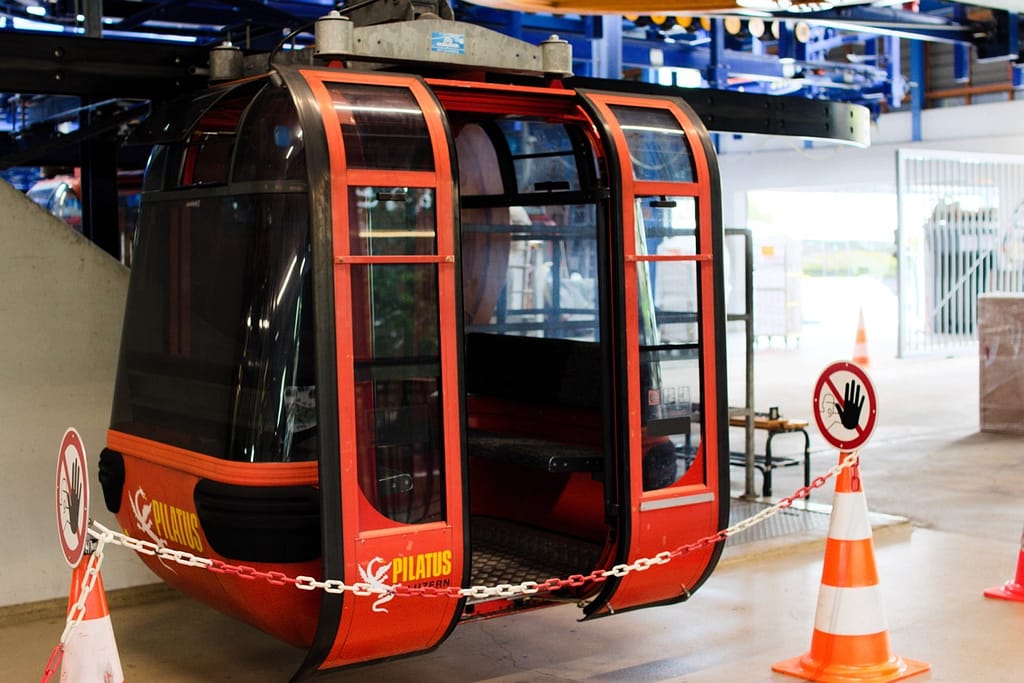


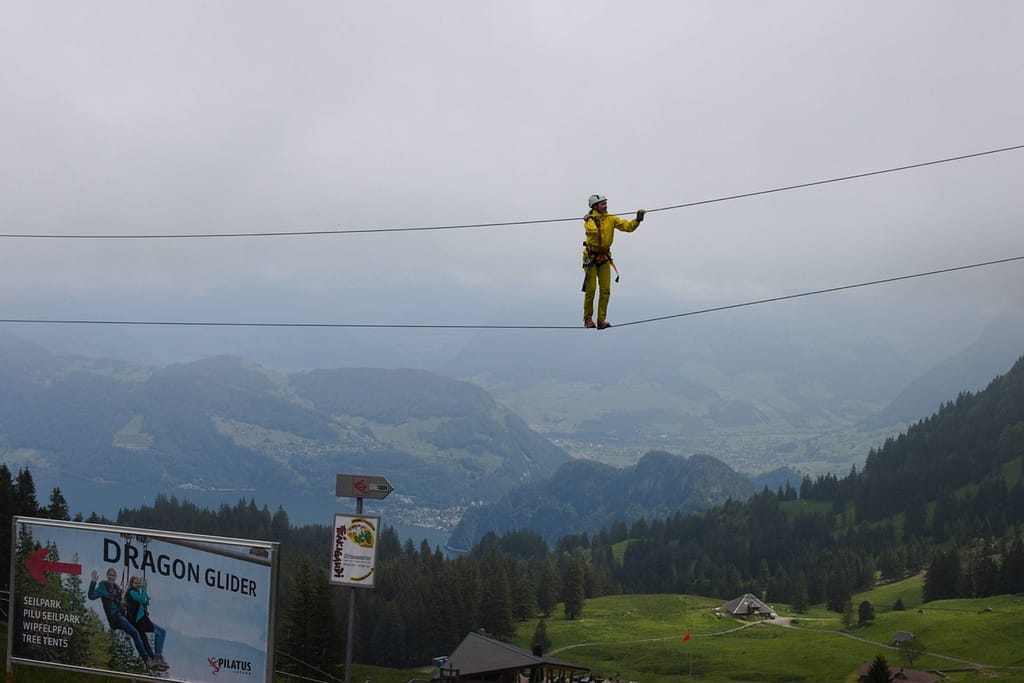











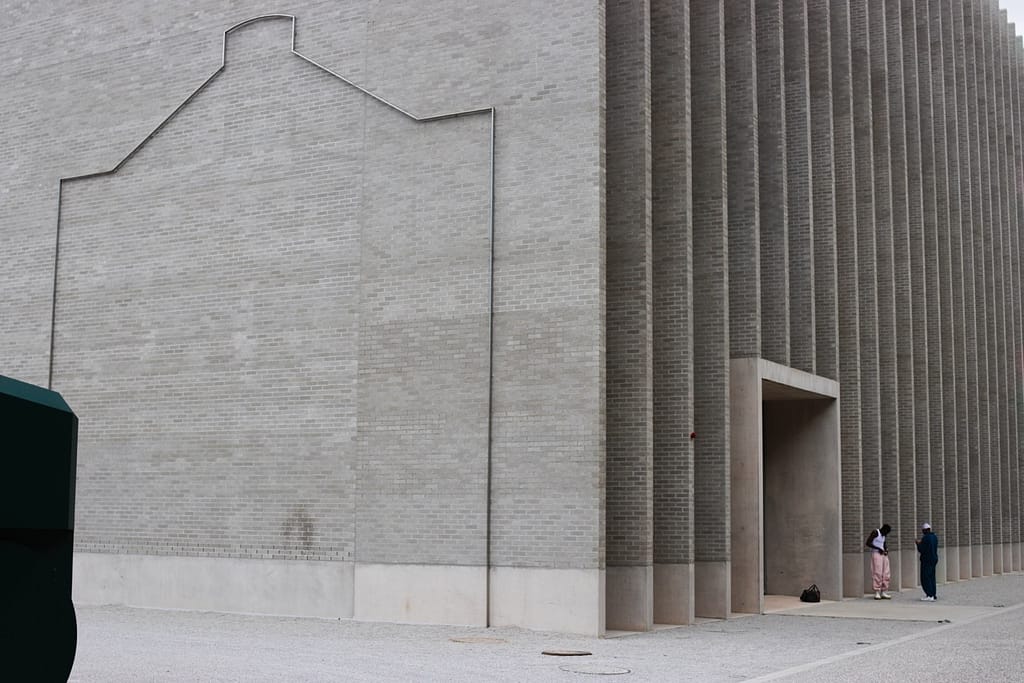

























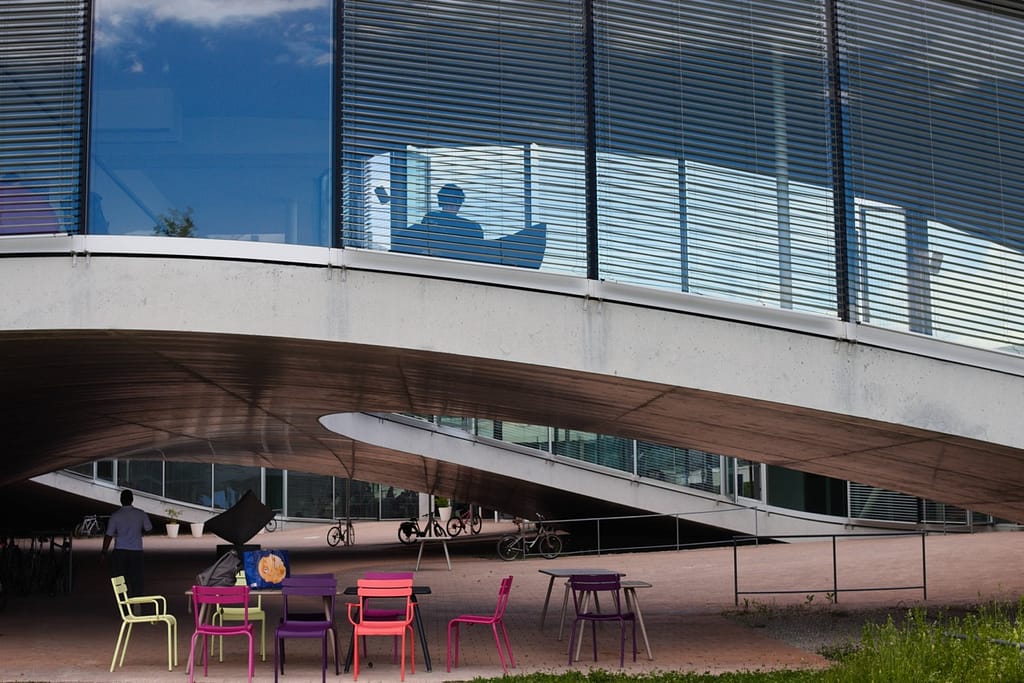


Always great to see you, Joe, and to tag along on your journey!
Thanks Andrew! Glad to know you’re following along.